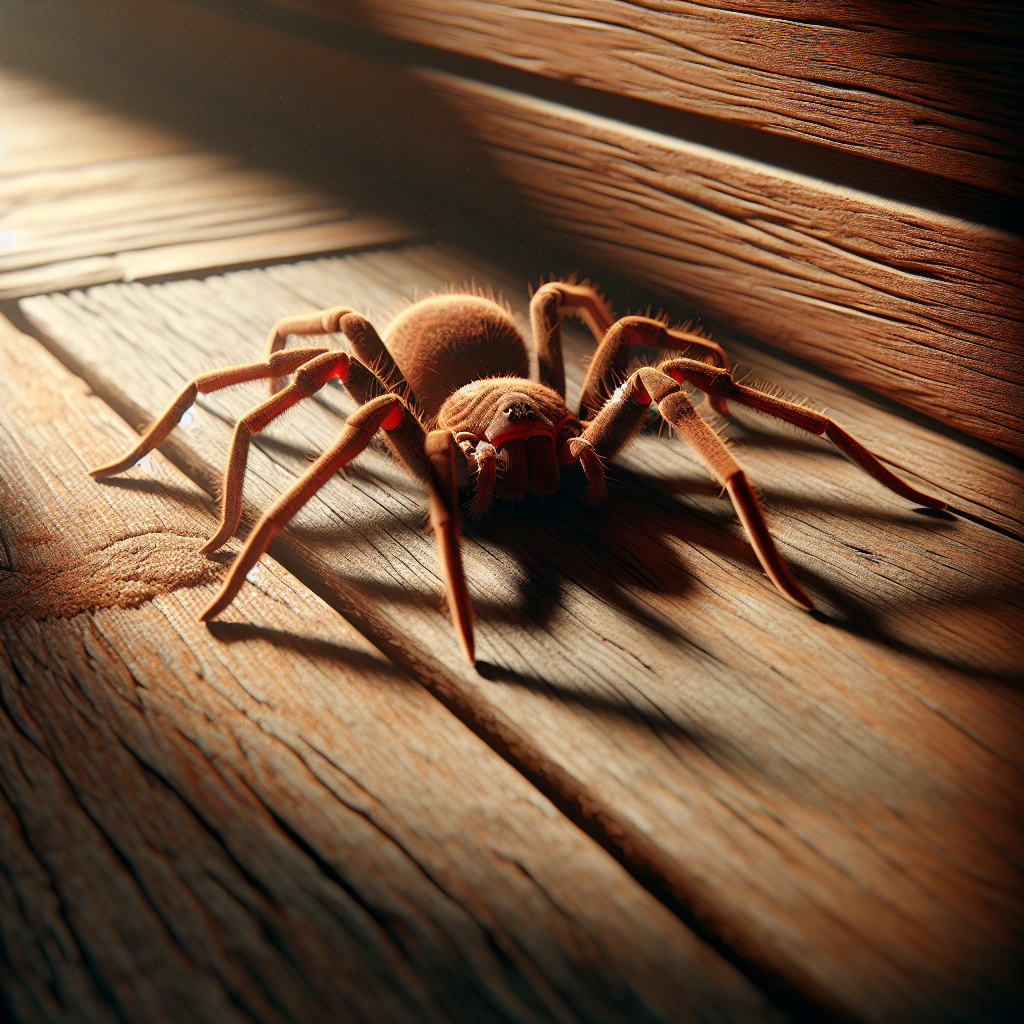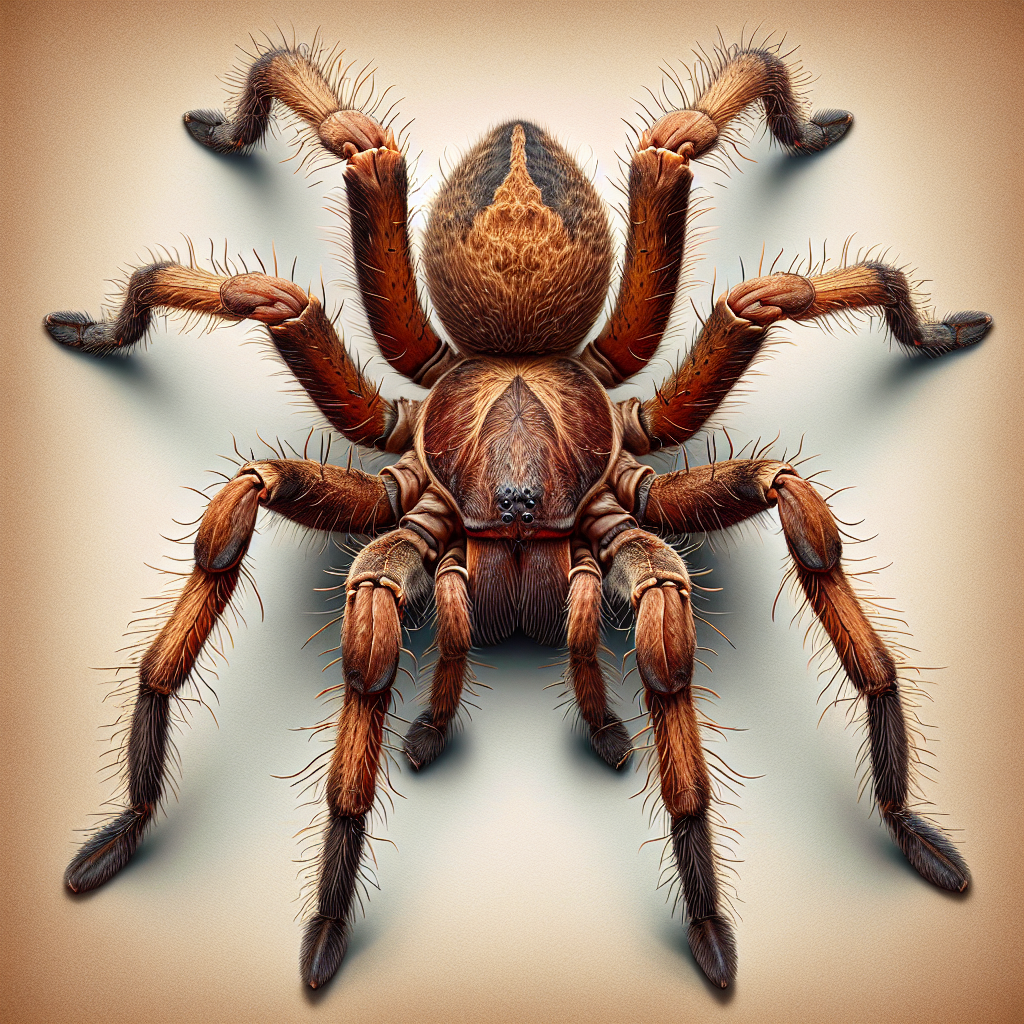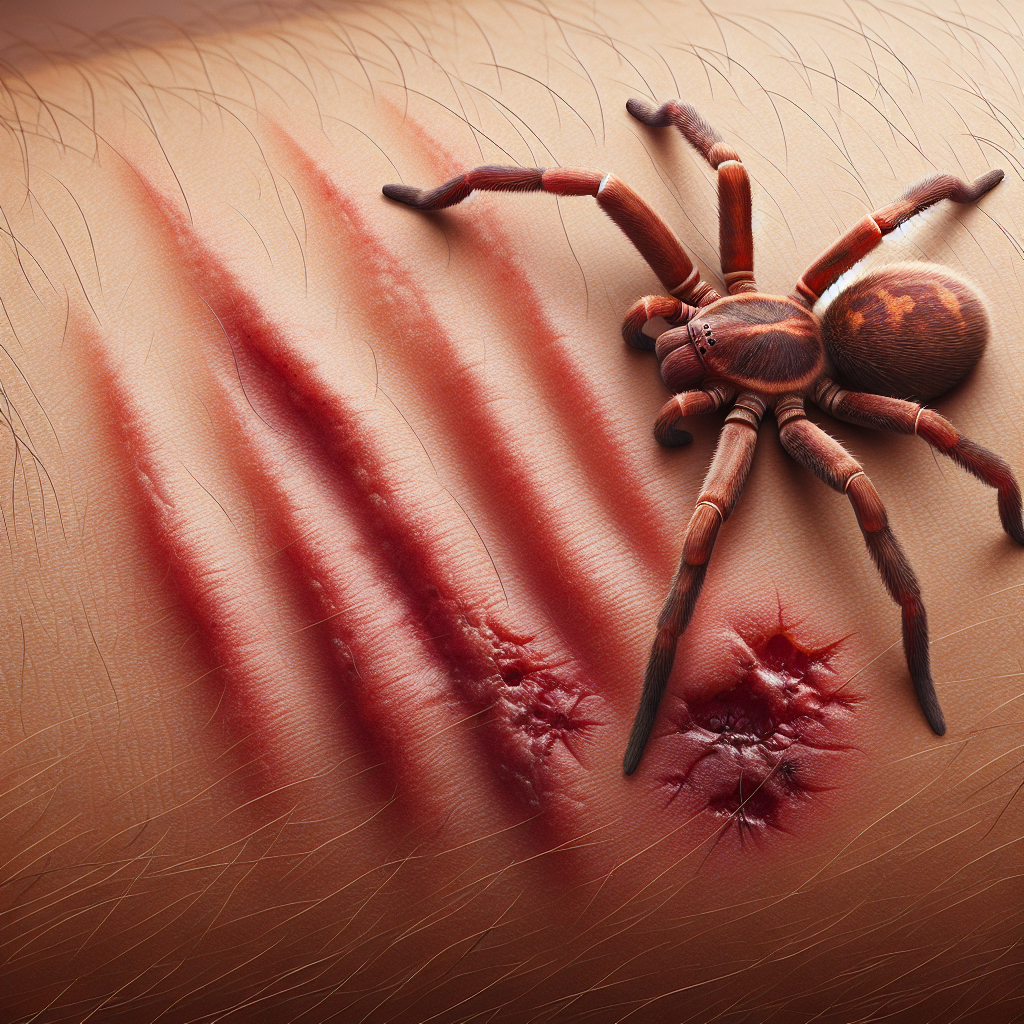Brown Recluse Spiders in Indiana: Identification and Prevention Tips
Introduction
Welcome to the thrilling world of the brown recluse spider in Indiana, a creature that has sparked both fascination and fear among residents. With its stealthy demeanor and a bite that can pack a punch, this spider is not just another eight-legged critter lurking in your basement. Understanding how to identify a brown recluse spider, its habitat, and prevention tips is crucial for anyone living in the Hoosier state.
First things first: let’s clear up some common misconceptions. Not every spider you encounter in your home is a brown recluse, but knowing what to look for can help you avoid an unwanted encounter. In this guide, we will dive deep into the world of brown recluse spiders from their physical characteristics to the signs of a brown recluse spider bite.
Why should you care? Well, while most spiders are harmless and even beneficial (hello, pest control!), the brown recluse does have a reputation that precedes it. Their bites can lead to serious symptoms and require medical attention, so being informed is your best defense. Plus, who doesn’t want to impress their friends with their newfound knowledge about identifying venomous spiders in Indiana?
So grab your magnifying glass (or just your smartphone) as we embark on this journey of discovery! By the end of this post, you’ll be armed with all the knowledge you need about brown recluse spiders from prevention strategies to treatment options if you’re bitten. Let’s get started!

Understanding the Brown Recluse Spider in Indiana
The brown recluse spider is not just a creepy crawly you might find lurking in a dark corner of your basement; it’s a fascinating creature with some serious survival skills. This little eight-legged wonder is known for its distinctive violin-shaped marking on its back, making it one of the most recognizable spiders in the United States, particularly in Indiana.
But why should you care? Well, understanding the brown recluse spider is crucial for anyone living in Indiana. With a habitat that includes both rural and urban settings, these spiders can pop up where you least expect them. Awareness can help you avoid a nasty surprise like a brown recluse spider bite, which can lead to some pretty unpleasant symptoms.
Did you know? The brown recluse spider is often mistaken for other common spiders in Indiana! Knowing how to identify a brown recluse spider can be your first line of defense.
Brown Recluse Spider Habitat
So, where do brown recluse spiders live in Indiana? These sneaky critters prefer warm, dry environments and are often found hiding in undisturbed areas such as:
- Basements
- Attics
- Crawl spaces
- Wood piles
- Boxes and cluttered spaces
The Importance of Awareness
A little knowledge goes a long way! Being aware of the signs of a brown recluse spider bite and understanding their habitat can significantly reduce your chances of an encounter. Remember, while they are among the more dangerous spiders in Indiana, they are not out to get you; they prefer to hide and avoid contact with humans.
Common Misconceptions
There are plenty of myths floating around about these spiders. For instance, many people believe that all spiders are deadly or that every bite from a brown recluse will result in severe symptoms. In reality, most bites are harmless and may not even require medical treatment. Understanding these misconceptions helps demystify the brown recluse spider and promotes safer interactions.
Brown Recluse Spider Identification
If you’re living in Indiana, knowing how to identify the brown recluse spider is crucial. These little critters might be more common than you think, and a little knowledge can go a long way in preventing any nasty surprises. So, let’s dive into the details!
Physical Characteristics of the Brown Recluse Spider
The brown recluse spider is not just another eight-legged creature lurking in the shadows; it has some distinct features that set it apart:
- Color: As its name suggests, this spider is typically a light to dark brown color.
- Size: Adult brown recluse spiders are about 1/4 to 1 inch in size, including their legs.
- Violin Marking: Look for a violin-shaped marking on its back this is a telltale sign of its identity!
- Six Eyes: Unlike most spiders that have eight eyes, the brown recluse has just six. They are arranged in pairs.
Common Misconceptions About Appearance
Now, before you start panicking at every brown spider you see, let’s clear up some common misconceptions:
- Not All Brown Spiders Are Brown Recluses: Many harmless spiders can be mistaken for the brown recluse. For example, the barn spider and wolf spider share similar hues but lack that infamous violin marking.
- The Size Factor: Just because it’s small doesn’t mean it’s dangerous. Many common spiders in Indiana are tiny and pose no threat at all.
How to Identify a Brown Recluse Spider Versus Other Spiders
If you’re unsure whether you’ve spotted a brown recluse or one of its less sinister cousins, here are some tips:
- Check the Eyes: Remember that unique six-eye arrangement? If you see eight eyes, it’s not a recluse!
- Examine the Legs: Brown recluses have long legs without spines or bands. If you see spiny legs or stripes, it’s likely another species.
- Location Matters: Knowing where they like to hang out can help too. Brown recluses prefer dark and secluded areas think basements or attics while other common spiders might be more visible.

Takeaway: Identifying a brown recluse spider correctly can prevent unnecessary panic and help you take action if needed. Stay informed and keep an eye out for those defining features!
Habitat and Distribution in Indiana
When it comes to the brown recluse spider in Indiana, understanding its habitat is crucial for both identification and prevention. These sneaky little critters are not just lurking around anywhere; they have their favorite spots!
Where Do Brown Recluse Spiders Live in Indiana?
The brown recluse spider prefers warm, dry environments, making Indiana a cozy home for them. They are typically found in:
- Basements and attics
- Closets and storage areas
- Woodpiles and sheds
- Under furniture or appliances
Indoor Habitats for the Brown Recluse Spider in Indiana Homes
If you think your home might be a brown recluse’s ideal lair, you’re not alone! These spiders love to hide in places where humans don’t venture often. Check these common indoor habitats:
- Bedsheets: They can squeeze into the folds of your bedding.
- Cardboard boxes: Perfect for nesting.
- Corners of rooms: Especially where dust collects.
- Piles of laundry: Who doesn’t love a good laundry pile?
Seasonal Activity of the Brown Recluse Spider in Indiana
The activity levels of the brown recluse spider can vary with the seasons. In Indiana, they tend to be more active during warmer months, but that doesn’t mean they’re hibernating all winter long!
Takeaway: Keep an eye out during spring and summer when these spiders are on the move, looking for mates and new hiding spots. Regular checks around your house can help spot them before they decide to make themselves too comfortable!
Signs and Symptoms of a Brown Recluse Spider Bite
So, you think you might have been bitten by a brown recluse spider? First off, don’t panic! While the thought of a venomous spider lurking in your home can send shivers down your spine, knowing the signs and symptoms of a brown recluse spider bite can help you stay calm and collected.
What Do Brown Recluse Spider Bites Look Like?
A brown recluse spider bite often starts with a small, red bump that can resemble a mosquito bite. But hold on this is just the beginning! Over the next few hours or days, the bite may develop into a more serious wound. Here’s what to look for:
- Redness around the bite area
- Swelling that may spread out from the initial site
- A blister or ulcer that forms as time goes on
- Dark center indicating tissue necrosis in severe cases
Signs of a Brown Recluse Spider Bite
Aside from visual symptoms, there are other signs to be aware of:
- Pain: Initially mild but can escalate to severe over time.
- Itching or rash: These can accompany the bite.
- Fever and chills: Your body might react like it’s fighting an infection.
- Muscle aches: You might feel like you’ve run a marathon without leaving your couch!
- Nausea: Some people report feeling queasy after being bitten.
When to Seek Medical Help
If you notice any of the following symptoms, it’s time to call in reinforcements (aka medical professionals):
- If the pain becomes unbearable or spreads significantly.
- If you see signs of infection (increased redness, pus).
- If you experience systemic symptoms like fever or chills that last more than a day.
- If you have underlying health conditions that could complicate recovery.
How to Treat a Brown Recluse Spider Bite at Home
If you’re dealing with a minor brown recluse spider bite and want to treat it at home (with caution!), here are some steps to follow:
- Cleansing: Gently wash the area with soap and water.
- Icing: Apply an ice pack wrapped in cloth for 10-20 minutes to reduce swelling.
- Pain relief: Over-the-counter medications like ibuprofen can help manage pain and inflammation.
- Avoid scratching: This will only worsen irritation and increase infection risk!

Dangers Associated with Brown Recluse Spiders
When it comes to spiders, not all are created equal. The brown recluse spider in Indiana has earned its reputation as one of the more notorious eight-legged critters lurking in the corners of your home. But what makes them so dangerous? Let’s unravel the myths and get to the facts.
Aren’t All Spiders Dangerous? Understanding the Risks
First things first: while many spiders are harmless and even beneficial (hello, pest control!), the brown recluse spider is a different story. Its venom can cause serious harm, leading to severe reactions in some individuals. Understanding these risks is crucial for anyone living in Indiana.
Are Brown Recluse Spiders Deadly?
The million-dollar question! While fatalities from a brown recluse spider bite are rare, they can happen, particularly in vulnerable populations like children and the elderly. Most bites result in localized pain and skin damage rather than systemic effects, but that doesn’t mean you should take them lightly!
Key Takeaway: Always treat a suspected brown recluse bite seriously. Early medical intervention is essential to mitigate complications.
Medical Treatment for a Severe Brown Recluse Bite in Indiana Hospitals
If you suspect you’ve been bitten by a brown recluse spider, it’s time to put on your superhero cape and head to your nearest hospital. Medical professionals may administer treatments that include:
- Pain management medications
- Tetanus shots if necessary
- Antibiotics if there’s an infection
- Surgical intervention for severe necrosis or tissue damage
The earlier you seek treatment, the better your chances of minimizing damage from a brown recluse spider bite. So don’t wait for that pesky bite mark to turn into a horror movie special effect!
Prevention Tips for Brown Recluse Spiders
Now that you’ve got the lowdown on the brown recluse spider in Indiana, let’s talk about how to keep these eight-legged intruders at bay. Think of it as your personal spider-proofing guide!
Best Ways to Prevent Brown Recluse Bites at Home and Outdoors
- Seal Up Your Home: Check for cracks and gaps around windows, doors, and foundations. If you can see light, spiders can wiggle through. Use caulk or weather stripping to seal those sneaky entrances.
- Declutter Like a Pro: Brown recluse spiders love hiding in cluttered areas. Keep your home tidy, especially basements, attics, and garages. Less clutter means less hiding spots!
- Regular Cleaning: Vacuum frequently especially corners and under furniture to eliminate spider webs and egg sacs. It’s like a spa day for your home!
Naturally Deterring Brown Recluse Spiders
If you prefer a more eco-friendly approach, consider these natural deterrents:
- Citrus Scents: Spiders are not fans of citrus! Use citrus-based cleaners or essential oils like lemon or orange to wipe surfaces.
- Peppermint Oil: Mix peppermint oil with water in a spray bottle and spritz around entry points. Not only does it smell delightful, but it also sends spiders packing.
- Natural Predators: Encourage natural predators of the brown recluse spider, such as birds and certain insects. A healthy ecosystem can help keep those pesky spiders in check.
Brown Recluse Spider Prevention Strategies for Homeowners
If you’re serious about stopping brown recluse spiders from making themselves at home, here are some strategies tailored for homeowners:
- Outdoor Maintenance: Keep your yard tidy by trimming back shrubs and removing debris where spiders might hide.
- Create Barriers: Place gravel or mulch barriers around your foundation to deter spiders from crawling close to your home.
- Pest Control Services: Consider hiring pest control professionals who specialize in identifying and eliminating brown recluse habitats.

Myths and Misconceptions About Brown Recluse Spiders in Indiana Media Reports
When it comes to the brown recluse spider in Indiana, misinformation runs rampant, often fueled by sensational media reports. Let’s unravel some of the most common myths that have taken root like an unwelcome spider web in your attic.
- Myth 1: All brown spiders are brown recluse spiders.
This is a classic case of mistaken identity! While many spiders can be brown, only the true brown recluse has that distinctive violin-shaped marking on its back. It’s like calling every chocolate candy a truffle deliciously misleading!
- Myth 2: Brown recluse spiders are everywhere in Indiana.
While they do inhabit parts of Indiana, they aren’t lurking behind every corner. Their preferred habitats include secluded areas like basements, attics, and woodpiles. So unless you’re hanging out in a dark corner of your garage, you’re probably safe!
- Myth 3: A brown recluse spider bite is always deadly.
This one deserves a strong debunking! While a bite can lead to serious symptoms and requires medical attention, fatalities are extremely rare. Think of it as a roller coaster ride thrilling but not necessarily dangerous if you follow safety protocols.
- Myth 4: Brown recluse bites happen frequently.
The truth is, bites from these spiders are quite uncommon. Most encounters with the brown recluse end without any bite at all. They prefer to avoid humans like we avoid stepping into sticky gum on the sidewalk!
- Myth 5: All spider bites are treated the same way.
This misconception can lead to big problems! Not all spider bites require the same treatment. Knowing how to identify a brown recluse spider bite versus other common spiders in Indiana is crucial for proper care.
Key Takeaway: Understanding these myths not only helps in identifying brown recluse spiders but also equips you with knowledge for effective prevention and treatment strategies.
Misinformation about dangerous spiders in Indiana can lead to unnecessary fear and panic. By arming yourself with accurate information about the brown recluse spider identification, habitat, and symptoms, you can confidently navigate your home without fear of becoming an unwitting victim of media hype.
Conclusion
- Recap of identification, prevention, and treatment tips.
- Encouragement to be proactive about pest control.

